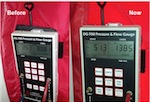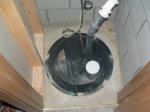Air Sealing is often talked about in the energy circle. But for most people air sealing is still an unfamiliar term.
I remember once at a community green event a gentleman was proudly said that he just had his attic insulated. I told him that was great and asked him if he also air sealed it. He paused and said that he’d do it later.
Unfortunately, that will cost him more. He probably was not advised that air sealing is important enough and that the proper order is to air seal first then insulate, unless you are applying spray foam insulation which acts also as a sealant.
Since the holes and gaps you want to seal up are always under the insulation materials, you will need to remove or move aside any insulation to get to the work areas. If you are planning to add or replace insulation, do check if air sealing is needed for your house. If so, include that in your project and do the air sealing first. Typically, houses that require more insulation are likely lacking in air sealing.
When running a bathroom exhaust fan, kitchen exhaust fan or clothes drier, portion of the air in a house gets expelled. That depressurizes the interior of the house. To balance the pressure out, external air has to enter the house. In a poorly sealed house, the easiest ways replacement air enters are from the cracks and holes. Air entering from these uncontrolled places causes two problems that are comfort and health related. First it can create drafts in unwanted parts of the house. Second and more importantly, air from attic and crawlspace is usually not the cleanest air, which we should try to keep away.
When embarking on an air sealing project, you should first work on attics and crawlspaces . After that, take care of the areas around pipes, around the windows and doors, cracks on walls, areas behind and around electric outlets and switches. When it is all done, you will enjoy a more comfortable and healthier home.








